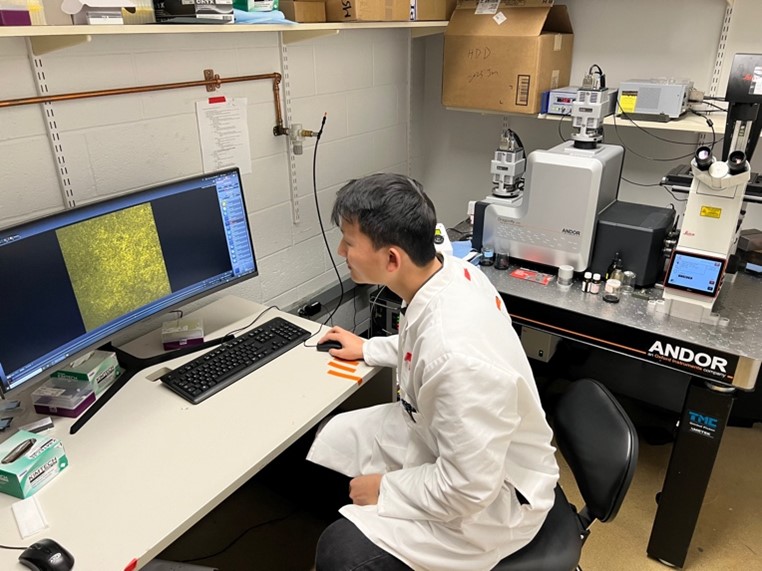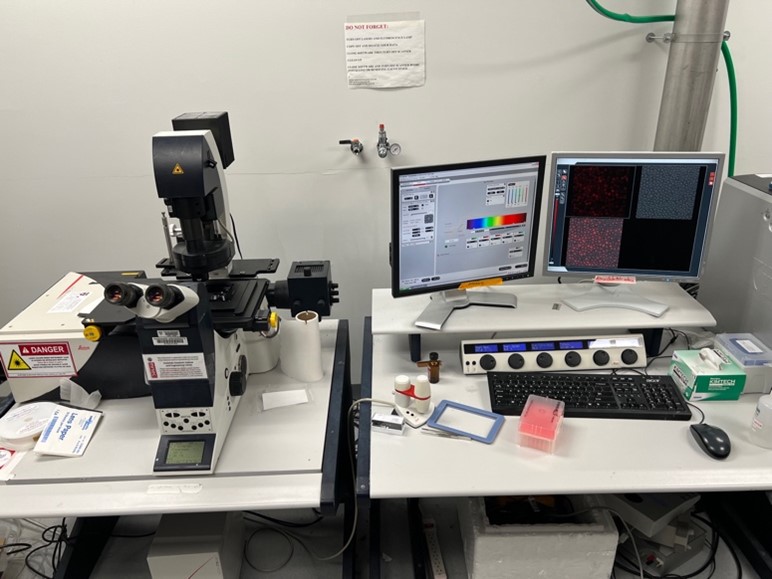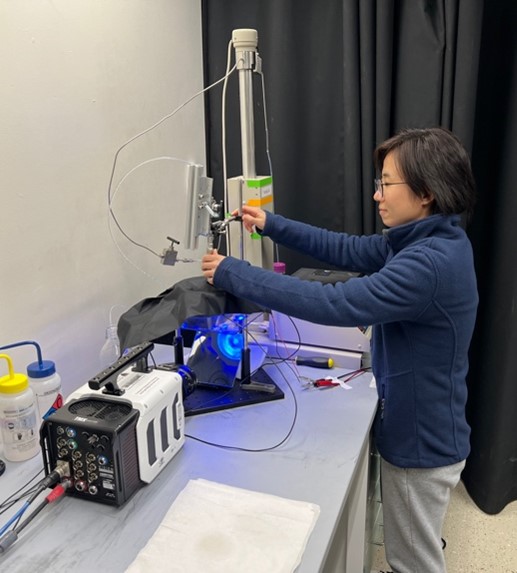Imaging Facilities
The MRSEC has several instruments dedicated to imaging:

Andor/Leica Spinning-disk Confocal Microscope
Andor/Leica spinning-disk confocal microscope is a customized imaging system providing both increased width of view and depth of field, using index-matched objectives. The Andor/Leica confocal system has improved stability that reduces noise as well as onboard deconvolution software to aid in the identification and tracking of each colloidal particle. The confocal instrument also has multiple multiple excitation wavelength light sources (405nm, 488nm and 561nm) and two high-sensitive detectors that simultaneously monitor different portions of the systems with two channels. This spinning-disk confocal enables fast tracking and 3D reconstruction, to probe both spatial and temporal dynamics in materials.

Leica SP5 Confocal Microscopes
The Center has several Leica SP5 microscopes; these are versatile point-scan confocal microscopes equipped with six laser lines, enabling multi-channel fluorescence imaging. They offers remarkable flexibility by allowing three to five emission collection channels to be utilized simultaneously. Researchers can choose between regular and high-speed resonance scanning modes to suit their experimental needs. With its advanced optics and scanning capabilities, the Leica SP5 empowers scientists to visualize and investigate intricate structures and dynamic processes on a micron scale with exceptional clarity and detail.

Phantom TMX5010 High-speed Camera
The Phantom TMX 5010 can capture video at up to 1.16 million frames per second (fps) at reduced resolutions, and 50,725 fps at full 1280 x 800 resolution. This makes it ideal for capturing events that happen very fast, such as material failure, deformation, explosions, and biological processes.
These instruments are operated under faculty supervision with training by postdoctoral fellow and graduate student "super-users." They are also available to researchers from academe and industry. If you would like to find out more about these instruments, please contact us, and provide us with a brief information about your interests.
